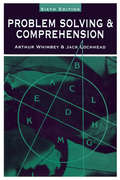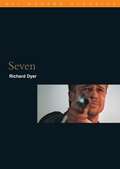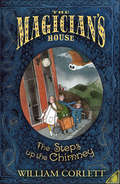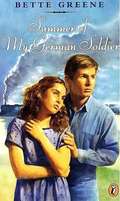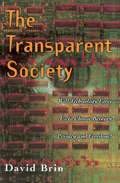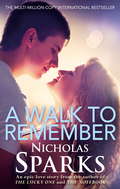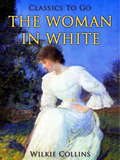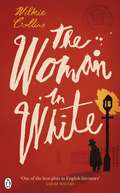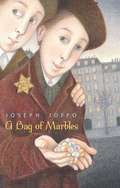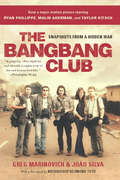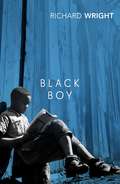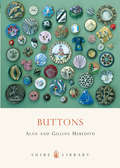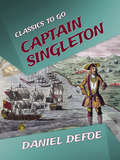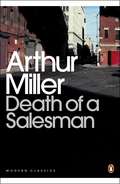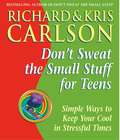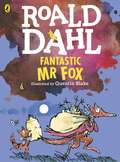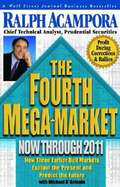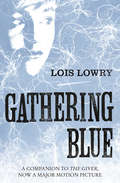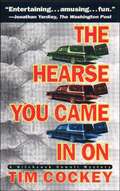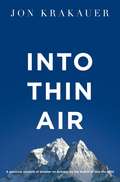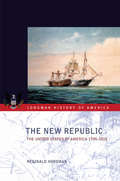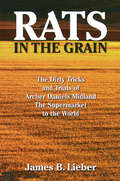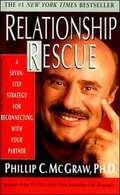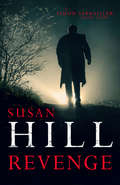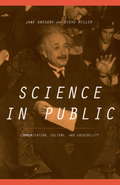- Table View
- List View
Problem Solving & Comprehension: A Short Course in Analytical Reasoning
by Arthur Whimbey Jack Lochhead Ronald NarodeThis popular book shows students how to increase their power to analyze problems and to comprehend what they read. First, it outlines and illustrates the method that good problem solvers use in attacking complex ideas. Then, it provides practice in applying these methods to a variety of comprehension and reasoning questions. Books on the improvement of thinking processes have tended to be complicated and less than useful, but the authors of this renowned text emphasize a simple but effective approach. The "Whimbey Method" of teaching problem solving is now recognized as an invaluable means of teaching people to think. Problems are followed by their solutions, presented in easy-to-follow steps. This feature permits students to work without supervision, outside the classroom. As students work through the book they will see a steady improvement in their analytical thinking skills, and will develop confidence in their ability to solve problems--on tests; in academic courses; and in any occupations that involve analyzing, untangling, or comprehending knotty ideas. By helping students to become better problem solvers, this book can assist students in achieving higher scores on tests commonly used for college and job selection, such as: * Scholastic Aptitude Test (SAT) * Graduate Record Examination (GRE) * ACT Work Keys * Terra Nova * Law School Admission Test (LSAT) * Wonderlic Personnel Test * United States Employment Service General Aptitude Test Battery * Civil Service Examination New in the 6th edition: A totally new chapter--"Meeting Academic and Workplace Standards: How This Book Can Help"--describes changes in the educational system in the past 20 years and shows how the techniques taught in this book relate to the new educational standards and tests. Changes throughout the book reflect current educational and social realities: the names of some characters have been changed to represent more accurately the cross-section of students attending today's schools; dates in some problems have been changed; in other problems the technology referred to has been updated.
Seven: Smew's Greed (BFI Film Classics)
by Richard DyerGluttony, Greed, Sloth, Lust, Pride, Envy, Wrath. A serial killer on a warped mission who turns his victims' 'sins' into the means of their murder. Seven (David Fincher, 1995) is one of the most acclaimed American films of the 1990s. Starring Morgan Freeman, Brad Pitt, and Kevin Spacey, Seven is the darkest of films. In it performance, cinematography, sound, and plot combine to create a harrowing account of a world beset by an all-encompassing, irremediable wickedness. Richard Dyer explores the film in terms of of sin, story, structure, seriality, sound, sight and salvation, analyzing how Seven both epitomizes and modifies the serial killer genre, which is such a feature of recent cinema.
The Steps up the Chimney (The\magician's House Quartet Ser. #Bk.1)
by William CorlettWilliam, Mary and Alice Constant have come to spend Christmas with their uncle as their parents are working abroad. Little by little, they discover that things in this remote old house are not quite what they seem. There are powerful forces at work, calling to the children from across the centuries; forces that pull them up the hidden steps in the chimney to the secret room where the magician lives.
Summer of My German Soldier: Reproducible Teaching Unit (Novel-ties Ser.novel-ties Study Guides)
by Greene BetteWhen the train pulls into the station in Jenkensville, Arkansas, Patty Bergen senses something exciting is going to happen. German prisoners of war have arrived to make their new home in the prison camp. To the rest of the town these prisoners are only Nazis, but to Patty, a young Jewish girl with a turbulent home life, one of the young soldiers becomes an unlikely friend. Anton understands her in a way her parents never could and Patty is willing to lose her own family, friends and even freedom for a boy who becomes the most important part of her life.
The Transparent Society: Will Technology Force Us To Choose Between Privacy And Freedom?
by David BrinIn New York and Baltimore, police cameras scan public areas twenty-four hours a day. Huge commercial databases track you finances and sell that information to anyone willing to pay. Host sites on the World Wide Web record every page you view, and "smart” toll roads know where you drive. Every day, new technology nibbles at our privacy.Does that make you nervous? David Brin is worried, but not just about privacy. He fears that society will overreact to these technologies by restricting the flow of information, frantically enforcing a reign of secrecy. Such measures, he warns, won't really preserve our privacy. Governments, the wealthy, criminals, and the techno-elite will still find ways to watch us. But we'll have fewer ways to watch them. We'll lose the key to a free society: accountability.The Transparent Society is a call for "reciprocal transparency.” If police cameras watch us, shouldn't we be able to watch police stations? If credit bureaus sell our data, shouldn't we know who buys it? Rather than cling to an illusion of anonymity-a historical anomaly, given our origins in close-knit villages-we should focus on guarding the most important forms of privacy and preserving mutual accountability. The biggest threat to our freedom, Brin warns, is that surveillance technology will be used by too few people, now by too many.A society of glass houses may seem too fragile. Fearing technology-aided crime, governments seek to restrict online anonymity; fearing technology-aided tyranny, citizens call for encrypting all data. Brins shows how, contrary to both approaches, windows offer us much better protection than walls; after all, the strongest deterrent against snooping has always been the fear of being spotted. Furthermore, Brin argues, Western culture now encourages eccentricity-we're programmed to rebel! That gives our society a natural protection against error and wrong-doing, like a body's immune system. But "social T-cells” need openness to spot trouble and get the word out. The Transparent Society is full of such provocative and far-reaching analysis.The inescapable rush of technology is forcing us to make new choices about how we want to live. This daring book reminds us that an open society is more robust and flexible than one where secrecy reigns. In an era of gnat-sized cameras, universal databases, and clothes-penetrating radar, it will be more vital than ever for us to be able to watch the watchers. With reciprocal transparency we can detect dangers early and expose wrong-doers. We can gauge the credibility of pundits and politicians. We can share technological advances and news. But all of these benefits depend on the free, two-way flow of information.
A Walk To Remember (Camden Ser.)
by Nicholas SparksCan you resist the depths of the human heart?It is 1958 and seventeen-year-old Landon is revelling in his youth: dating girls and even claiming to have been in love. He is a world apart from shy, reclusive Jamie Sullivan, a Baptist's daughter who carries a bible with her school books, cares for her widowed father and volunteers at the orphanage. But fate will intervene.Forced to partner up at the school dance, Landon and Jamie embark on a journey of earth-shattering love and agonising loss far beyond their years. In the months that follow, Landon discovers the true depths of the human heart, and takes a decision that is so stunning it will lead him irrevocably down the road to manhood . . .
The Woman in White: A Novel (part Two) And Short Stories: The Dead Alive; The Fatal Cradle; Fatal Fortune; Blow Up With The Brig (Classics To Go #Vol. 1)
by Wilkie CollinsWilliam Wilkie Collins (8 January 1824 – 23 September 1889) was an English novelist, playwright, and author of short stories. His best-known works are “The Woman in White”, “The Moonstone”, “Armadale”, and “No Name”. “The Woman in White” is Wilkie Collins' fifth published novel, written in 1859. It is considered to be among the first mystery novels and is widely regarded as one of the first (and finest) in the genre of "sensation novels". The story is sometimes considered an early example of detective fiction with the hero, Walter Hartright, employing many of the sleuthing techniques of later private detectives. The use of multiple narrators draws on Collins's legal training, and as he points out in his Preamble: "the story here presented will be told by more than one pen, as the story of an offence against the laws is told in Court by more than one witness". In 2003, Robert McCrum writing for The Observer listed The Woman in White number 23 in "the top 100 greatest novels of all time", and the novel was listed at number 77 on the BBC's survey The Big Read. (Excerpt from Wikipedia)
The Woman in White: A Novel (part Two) And Short Stories: The Dead Alive; The Fatal Cradle; Fatal Fortune; Blow Up With The Brig (The\works Of Wilkie Collins #Vol. 1)
by Wilkie Collins Matthew SweetThe Woman in White famously opens with Walter Hartright's eerie encounter on a moonlit London road. Engaged as a drawing master to the beautiful Laura Fairlie, Walter is drawn into the sinister intrigues of Sir Percival Glyde and his 'charming' friend Count Fosco, who has a taste for white mice, vanilla bonbons and poison. Pursuing questions of identity and insanity along the paths and corridors of English country houses and the madhouse, The Woman in White is the first and most influential of the Victorian genre that combined Gothic horror with psychological realism.
A Bag of Marbles: The Graphic Novel
by Joseph JoffoWhen Joseph Joffo was ten years old, his father gave him and his brother fifty francs and instructions to flee Nazi-occupied Paris and, somehow, get to the south where France was free. Previously out of print, this book is a captivating and memorable story; readers will instinctively find themselves rooting for these children caught in the whirlwind of World War II.
The Bang-Bang Club, movie tie-in: Snapshots From a Hidden War
by Greg Marinovich Joao SilvaA gripping story of four remarkable young men—photographers, friends and rivals—who band together for protection in the final, violent days of white rule in South Africa.
Black Boy (P. S. Series)
by Richard Wright'In Black Boy I found expressed, for the first time in my life, the sorrow, the rage, and the murderous bitterness which was eating up my life and lives of those around me. [Richard Wright's] work was an immense liberation and revelation for me. He became my ally and my witness, and alas! my father' - James BaldwinAt four years of age, Richard Wright set fire to his home; at five his father deserted the family; by six Richard was - temporarily - an alcoholic. Moved from home to home, from brick tenement to orphanage, he had had, by the age of twelve, only one year's formal education. It was in saloons, railroad yards and streets that he learned the facts about life under white subjection, about fear, hunger and hatred. Gradually he learned to play Jim Crow in order to survive in a world of white hostility, secretly satisfying his craving for books and knowledge until the time came when he could follow his dream of justice and opportunity in the north.
Buttons: A World Champion's Story (Shire Library)
by Alan Meredith Gillian MeredithButtons have been made from almost every known material. Their study provides insight into fashion trends, the clothing industry and social history in general. This book introduces an array of these treasures from the past, to show the variety of materials and the intricate design and workmanship incorporated in the making of the button.
Captain Singleton: The Life, Adventures, And Piracies Of Captain Singleton (Classics To Go)
by Daniel DefoeThe book tells the story of Bob Singleton, who had been kidnapped as a boy from a good home and grew up with no real home. He came aboard a ship and eventually ended up being cast on an island with other crewmen. They managed to get to Africa and about the first half of the novel deals with the company's travel through Africa until they found a port from which they could get back to Europe. After their return there Singleton became member of another ships' crew and after a mutiny they led the lives of pirates with Singleton as their captain, which mostly covers the last half of the book, finishing in Singleton and a friend being repentant, leaving of their (successful) lives as pirates and returning home in disguise to find a peaceful life. (Excerpt from Goodreads)
Death of a Salesman (PDF)
by Arthur MillerIn the spring of 1948 Arthur Miller retreated to a log cabin in Connecticut with the first two lines of a new play already fixed in his mind. He emerged six weeks later with the final script of Death of a Salesman - a painful examination of American life and consumerism. Opening on Broadway the following year, Miller's extraordinary masterpiece changed the course of modern theatre. In creating Willy Loman, his destructively insecure anti-hero, Miller himself defined his aim as being 'to set forth what happens when a man does not have a grip on the forces of life.'
Don't Sweat the Small Stuff for Teens: Simple Ways to Keep Your Cool in Stressful Times
by Richard Carlson Richard And Kris CarlsonWith their calm and reassuring advice Richard and Kris Carlson show teenagers how not to stress out about homework, peer pressures, dating, parents, and other potentially difficult areas. Topics include:* Be creative in your rebellion* Start a mutual listening club* Notice your parents doing things right* Be okay with your bad hair day* Turn down the drama meter* Don't sweat the futureWith their calm and reassuring advice Richard and Kris Carlson show teenagers how not to stress out about homework, peer pressures, dating, parents, and other potentially difficult areas. Topics include:* Be creative in your rebellion* Start a mutual listening club* Notice your parents doing things right* Be okay with your bad hair day* Turn down the drama meter* Don't sweat the future
Fantastic Mr Fox (Puffin Story Tapes Ser.)
by Roald Dahl Quentin BlakeThe legendary Roald Dahl story with full-colour illustrations by Quentin Blake throughout.Fantastic Mr Fox - the tale of the most cunning fox in the world. Boggis is an enormously fat chicken farmer who only eats boiled chickens smothered in fat.Bunce is a duck-and-goose farmer whose dinner gives him a beastly temper.Bean is a turkey-and-apple farmer who only drinks gallons of strong cider.Mr Fox is so clever that every evening he creeps down into the valley and helps himself to food from the farms.Now the farmers have hatched a plan to BANG-BANG-BANG shoot Mr Fox dead. But, just when they think Mr Fox can't possibly escape, he makes a fantastic plan of his own . . . Listen to FANTASTIC MR FOX and other Roald Dahl audiobooks read by some very famous voices, including Kate Winslet, David Walliams and Steven Fry - plus there are added squelchy soundeffects from Pinewood Studios! And look out for new Roald Dahl apps in the App store and Google Play - including the disgusting TWIT OR MISS! and HOUSE OF TWITS inspired by the revolting Twits.
The Fourth Mega-Market, Now Through 2011: How Three Earlier Bull Markets Explain the Present and Predict the Future
by Ralph Acampora Michael D'AngeloA proven leader in the financial world explains the current bull market--and how to profit from it--by comparing it to the great bull markets of the past.Were you surprised by Wall Street's incredible performance over the past few years? Ralph Acampora wasn't. In fact, Acampora, Prudential's top technical analyst, predicted the current bullish trend--and helped countless clients profit from it. Now you can too.Acampora coined the term mega-market to describe a bull market that lasts a minimum of ten years and a maximum of eighteen years with Dow gains of between 400% and 500%. In The Fourth Mega-Market, Acampora helps readers take advantage of the staggering performance of the current market by showing its similarities with the three previous mega-markets in American history. In an entertaining and straight-forward style, and with a wealth of informative charts and graphs, he helps readers recognize patterns that can explain market performance, showing how to use technical analysis to "hear the voices" of the market. He offers valuable tips, such as how to spot and protect yourself from a correction; how psychology and politics influence the market; and how to analyze the performance of various market segments. Finally, he makes exciting predictions on just where the market will go before it ends and how it will get there, giving specific recommendations. While today's information overload keeps us on the edge of our seats, scanning the numbers for subtle clues as to the market's next seismic shift, Ralph Acampora shows us the value of a larger perspective, one that not only explains today's mega-market, but also shows us how to keep investing our money wisely and ride high on the current wave.
Gathering Blue: A Play (The Giver Quartet #2)
by Lois LowryThe fascinating sequel to THE GIVER which inspired the dystopian genre and is soon to be a major motion picture starring Jeff Bridges, Katie Holmes and Taylor Swift.
The Hearse You Came in On: A Hitchcock Sewell Mystery
by Tim CockeyWhat self-respecting undertaker would allow himself to get involved in a murder investigation, a series of dirty videos, a case of political blackmail, and police corruption, as well as one of the worst amateur theater productions in recent memory? None, unless your name happens to be Hitchcock Sewell, the most charming suspense hero to come along in years. And who knew an undertaker could look so good? In this fast-paced and enormously entertaining mystery, Hitch has gotten himself into more trouble than any self-respecting undertaker should.
Into Thin Air: A Personal Account of the Everest Disaster (Picador Collection #111)
by Jon KrakauerJon Krakauer's Into Thin Air is the true story of a 24-hour period on Everest, when members of three separate expeditions were caught in a storm and faced a battle against hurricane-force winds, exposure, and the effects of altitude, which ended in the worst single-season death toll in the peak's history. In March 1996, Outside magazine sent veteran journalist and seasoned climber Jon Krakauer on an expedition led by celebrated Everest guide Rob Hall. Despite the expertise of Hall and the other leaders, by the end of summit day, eight people were dead. Krakauer's book is at once the story of the ill-fated adventure and an analysis of the factors leading up to its tragic end. Written within months of the events it chronicles, Into Thin Air clearly evokes the majestic Everest landscape. As the journey up the mountain progresses, Krakauer puts it in context by recalling the triumphs and perils of other Everest trips throughout history. The author's own anguish over what happened on the mountain is palpable as he leads readers to ponder timeless questions.One of the inspirations for the major motion picture Everest, starring Jake Gyllenhaal and Keira Knightley.'Into Thin Air ranks among the great adventure books of all time.' - Wall Street Journal'A harrowing tale of the perils of high-altitude climbing, a story of bad luck and worse judgment and of heartbreaking heroism.' - People
The New Republic: The United States of America 1789-1815
by Reginald HorsmanReginald Horsman's powerful and comprehensive survey of the early years of the American Republic covers the dramatic years from the setting up of the US Constitution in 1789, the first US presidency under George Washington, and also the presidencies of Adams, Jeffersen and Madison. A major strength of the book is that the coverage of the traditional topics about the shaping of the new government and crisis in foreign policy is combined with chapters on race, slavery, the economy and westward expansion, revealing both the strengths and weaknesses of the government and society that came into being after the Revolution. Key features include: Combines extensive research with the best recent scholarship on the period A balanced account of the contributions of the leading personalities Impressive coverage is given to questions of race and territorial expansion Chapter One provides a concise and lucid account of the state of American politics and society in 1789 Extensive chapter bibliographies The work will be welcomed by students studying the early republic as well as general readers interested in a stimulating and informative account of the early years of the American nation.
Rats in the Grain: The Dirty Tricks and Trials of Archer Daniels Midland, the Supermarket to the World
by James B. LieberBeneath the wholesome image of Archer Daniels Midland lie some of the dirtiest practices in American business: price-fixing, bribery, and cover-ups. Unfolding like a legal thriller, Rats in the Grain portrays the crime and punishment of ADM during the largest white-collar criminal trial of the 1990s. James Lieber profiles the witnesses, the defense lawyers and federal prosecutors, the inner workings of the Justice Department's Antitrust Division, and the unpredictable mole Lieber had access to. "A detailed account of how an influential corporation can go rotten." - The Cleveland Plain Dealer
Relationship Rescue: A Seven-Step Strategy for Reconnecting with Your Partner
by Phillip C. McGrawAs a follow-up to his bestselling book Life Strategies, Oprah acolyte Phillip C. McGraw, Ph.D., moves from aiding the aimless individual to coaching the disconnected couple. McGraw has distilled his more than two decades of counseling experience into a seven-step strategy he calls "Relationship Rescue.""I'm prepared to kick a hole in the wall of the pain-ridden, unhappy maze you've gotten yourself into, and provide you clear access to action-oriented answers and instructions on what you must do to have what you want," says Dr. Phil. His aim is to expose and eliminate the saboteurs that cause senseless damage to already-fragile marriages, and, like an emotional root canal, to replace them with values he says provide positive results. If you follow Dr. Phil's strategy, he will lead you on a precise journey to uncover your heart and then share it with your partner as part of taking the "risk of intimacy."Dr. Phil leads you to "reconnect with your core" in the first five steps of his seven-step strategy. By no means a quick fix, there are in-depth and rigorous questionnaires, surveys, tests, and profiles that require a "brutally candid" mindset, with such fill-in-the-blanks as "List five things that today would make you fall out of love with your partner." With this internal work accomplished, you'll then move on to reconnecting with your partner during a two-week, half-hour-a-day short course. As a "dyad," you and your loved one take turns giving monologues on topics such as "The most positive thing I took away from my mother and father's relationship was..."Once the "reconnection" has been established, Dr. Phil says the work shifts to a management role, as relationships are always a work in progress. Dr. Phil humorously refers to his own marriage throughout the book, sharing his mishaps and victories in learning to accept and enjoy what he sees as fundamental but complementary differences between men and women. --John Youngs
Revenge: A Story Of 1920s Hollywood (Simon Serrailler)
by Susan HillA new Simon Serrailler short story from Susan Hill, throwing Simon into a case like no other: an effigy is hanging in the woods, and soldiers are on the run from demons in their pastSimon Serrailler is awoken into a hazy dawn by the sharp ringing of his phone. Called out to the scene, he’s told that there’s a body strung up in tranquil Harnham Woods. But on closer inspection it’s an effigy – a carefully made dummy, stirring in the breeze. Simon knows that this is no practical joke. It’s a message.The gruesome result of the search will show that he was right. And the trail will lead him into a dark history of deceit, subterfuge and the damaged lives of soldiers recently returned from Afghanistan. But the question remains: who has finally got their revenge?If you enjoyed 'Revenge', look out for the tenth Simon Serrailler thriller, The Benefit of Hindsight in October 2019
Science In Public: Communication, Culture, And Credibility
by Jane Gregory Steven MillerDoes the general public need to understand science? And if so, is it scientists' responsibility to communicate? Critics have argued that, despite the huge strides made in technology, we live in a "scientifically illiterate" society--one that thinks about the world and makes important decisions without taking scientific knowledge into account. But is the solution to this "illiteracy" to deluge the layman with scientific information? Or does science news need to be focused around specific issues and organized into stories that are meaningful and relevant to people's lives? In this unprecedented, comprehensive look at a new field, Jane Gregory and Steve Miller point the way to a more effective public understanding of science in the years ahead.
